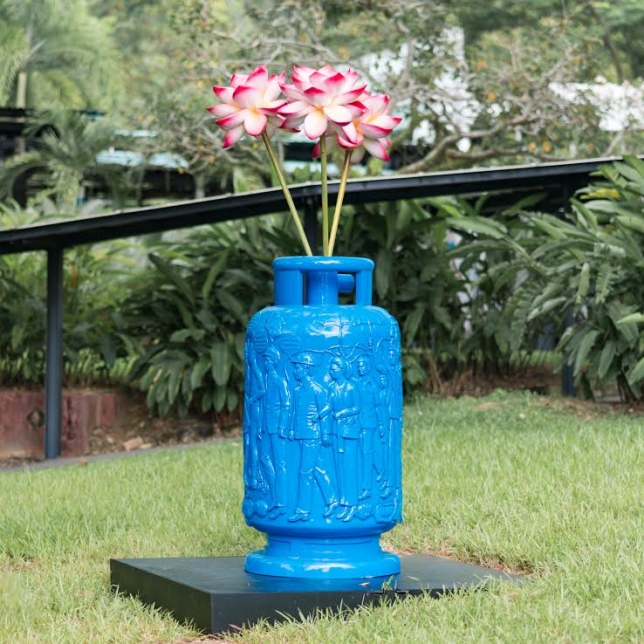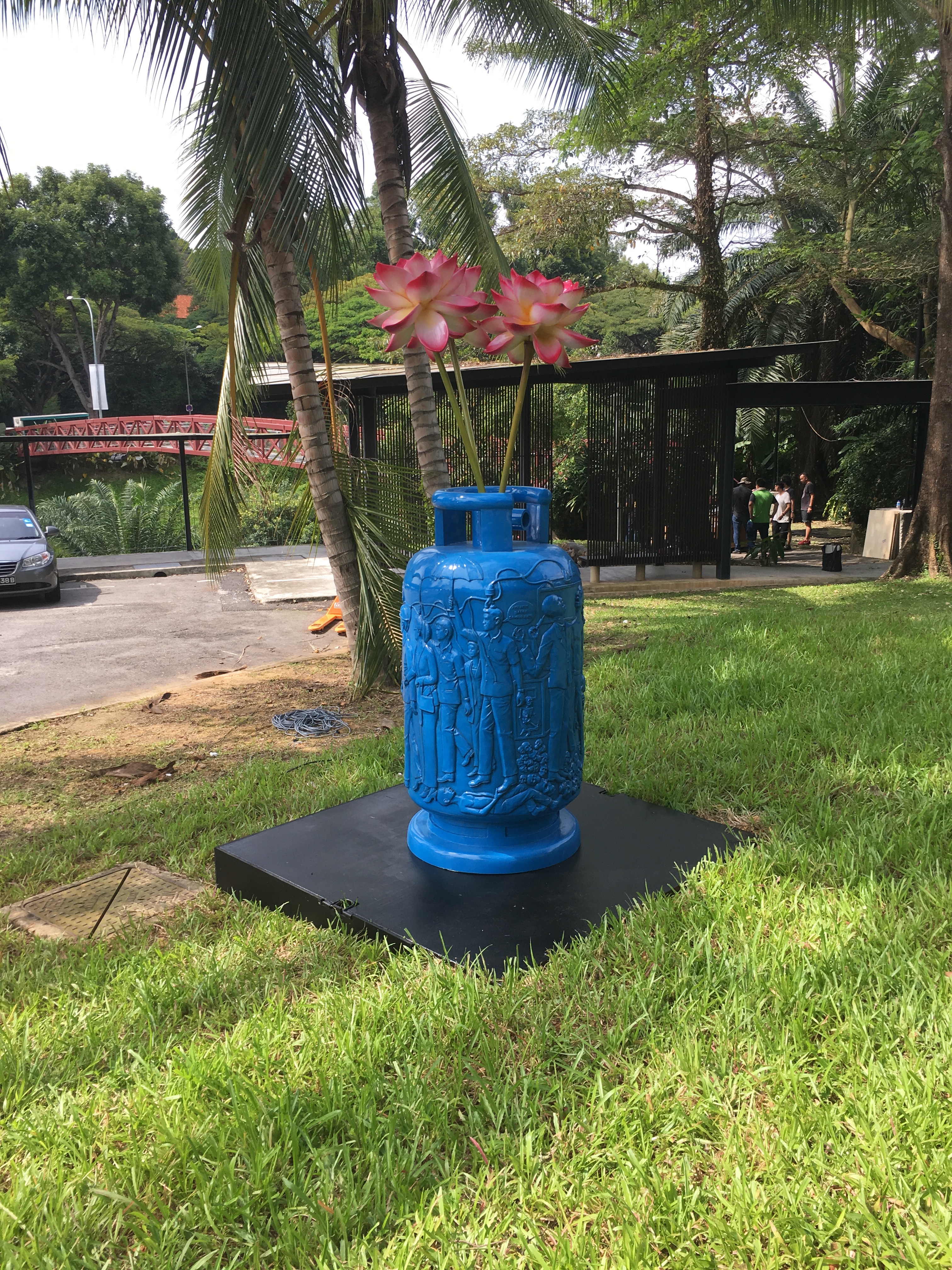This work was conceived as a self-portrait which links historic events with personal identity. The reliefs around the body of the gas tank depict episodes from Indonesian history from the colonial period through the presidency of Susilo Bambang Yudhoyono. Without a beginning or end, the images reflect how past events can be reactivated by current experiences. The monumental scale of the work suggests the weight of history and events that are often beyond our control. The gas tank is a common object in Indonesian homes. Frequent news reports tell how defective units unexpectedly explode, killing or injuring people in their homes. These tragedies lead to talk of consumer protections and strategies to improve safety and accountability, but little changes and the risk remains. This latent risk mirrors Indonesian history, which has seen times of peace interspersed with violence and tragedy. The flowers speak to the desire to “decorate” or cover over dark episodes, attempts to either ignore or suppress anxiety and risks. Each of us is an embodiment of history, living on and manifesting in our daily lives.
About LOCK ROUTE
Taking inspiration from 9 Lock Road, the address of Gillman Barracks and traditional, 24km long route march common in the training of ‘graduating’ army recruits in Singapore, Lock Route invite visitors to traverse the knolls of this repurposed army barracks as part of their encounters with art. In a concoction of the eclectic, the urban and contemporary aesthetics from a line-up of international artists, this outdoor exhibition illicit both mental introspect and physical responses. Lock Route is currated by Khairuddin Hori.

